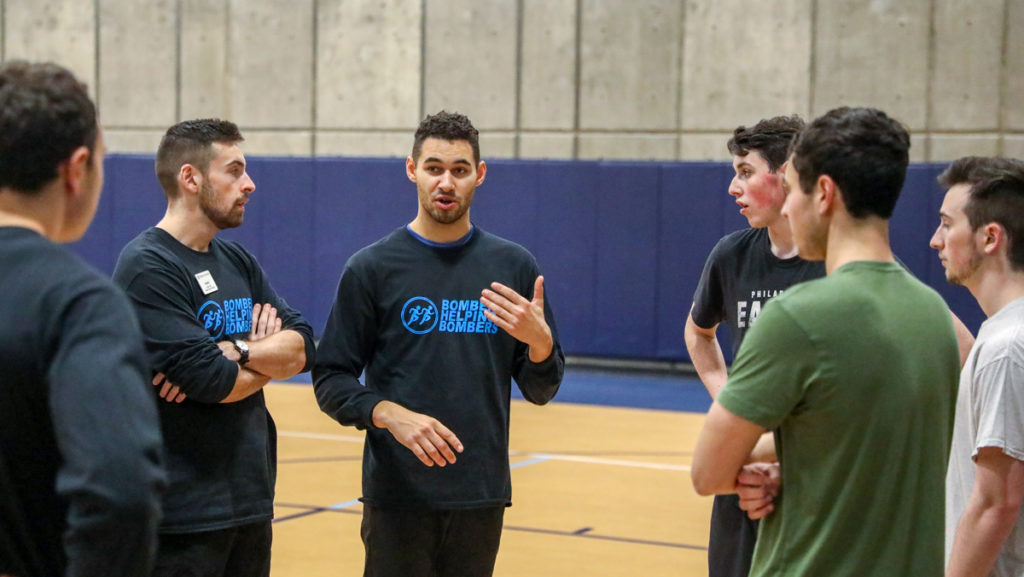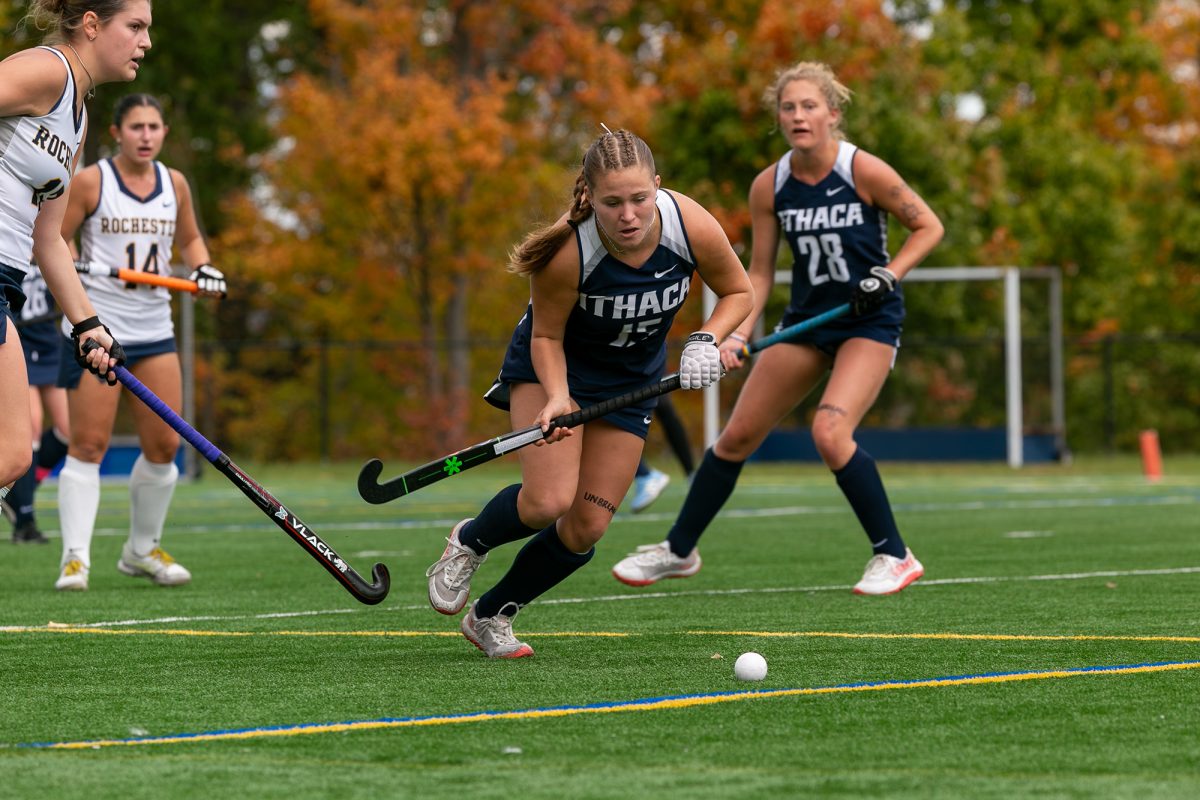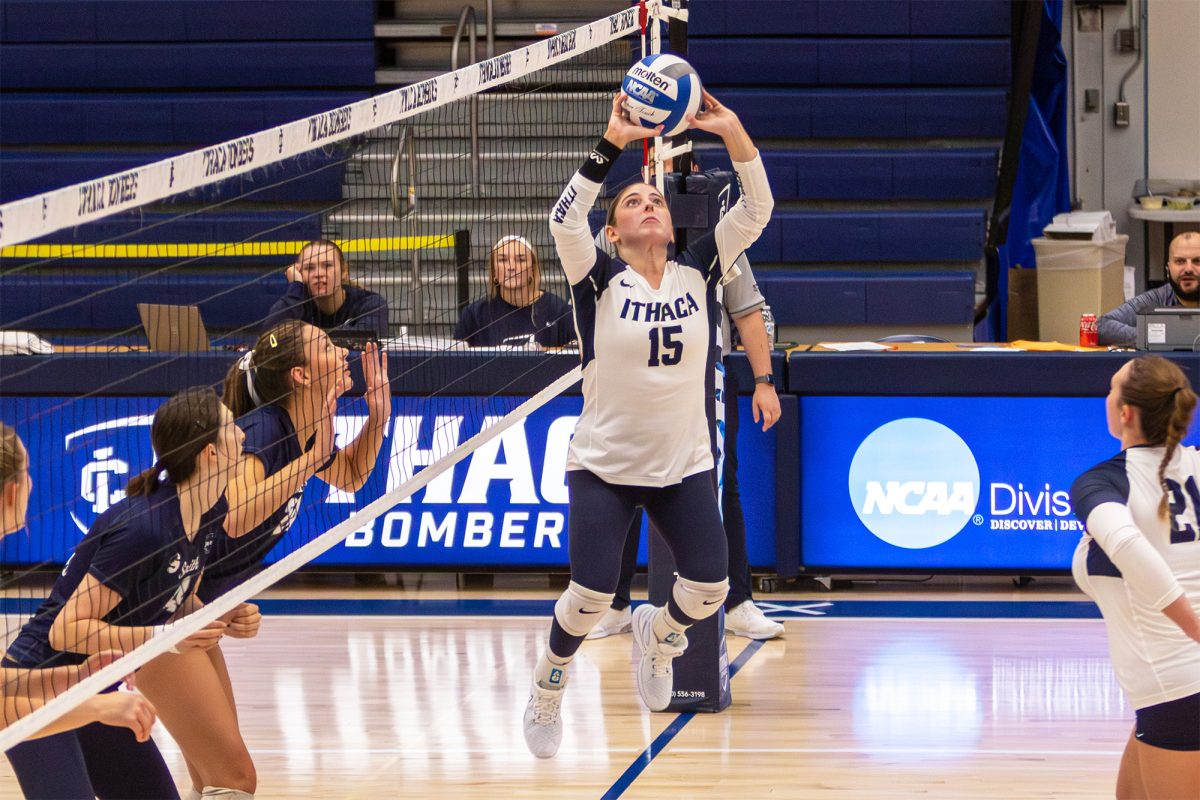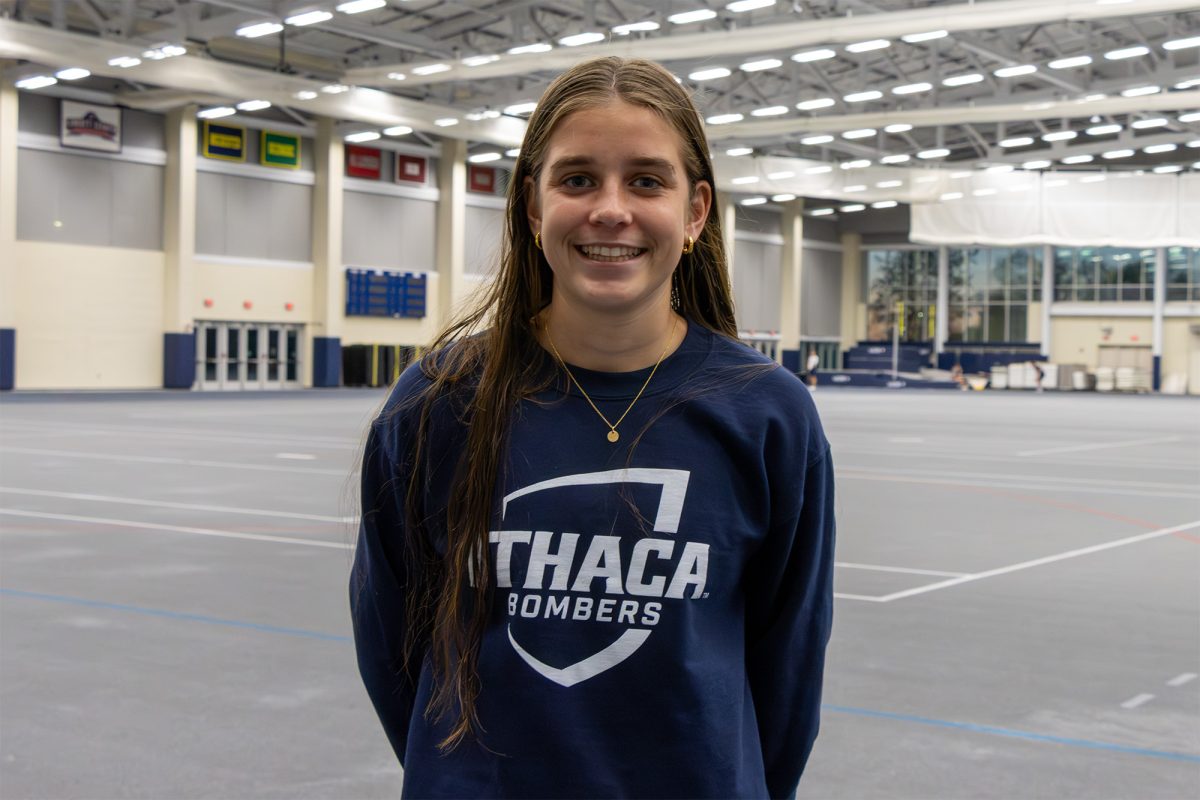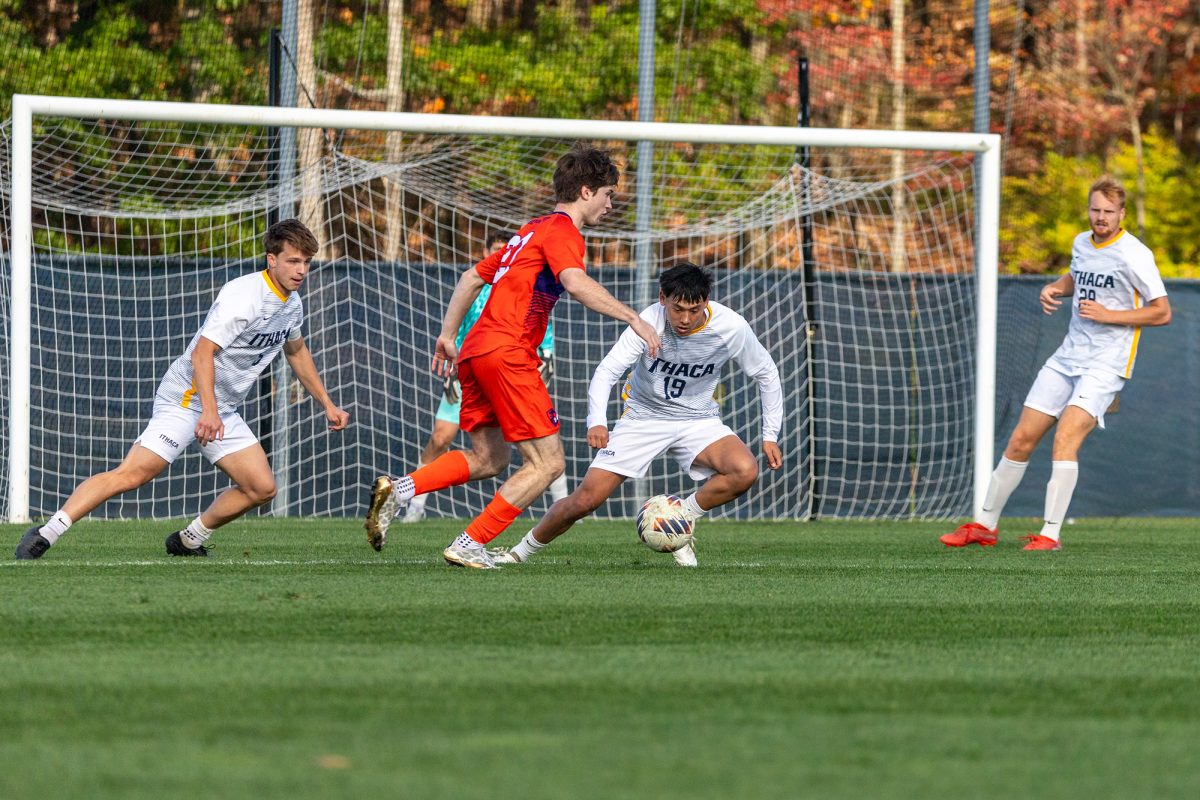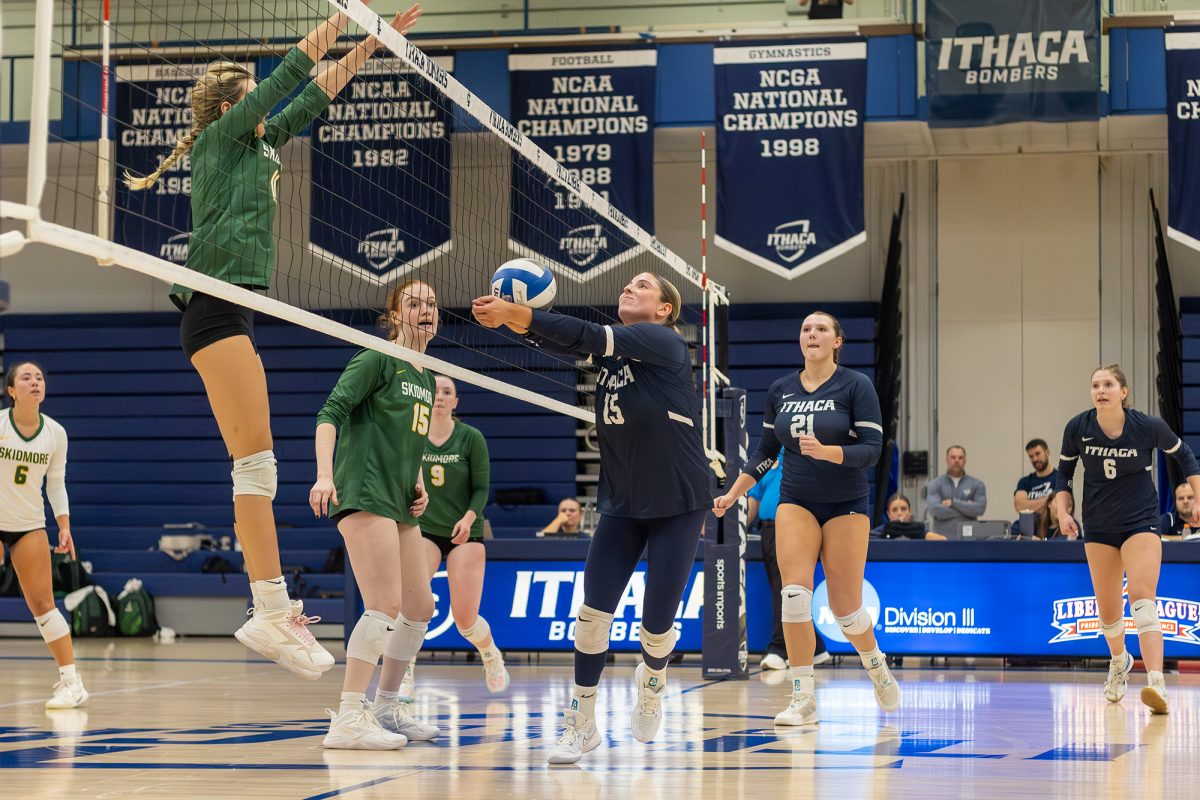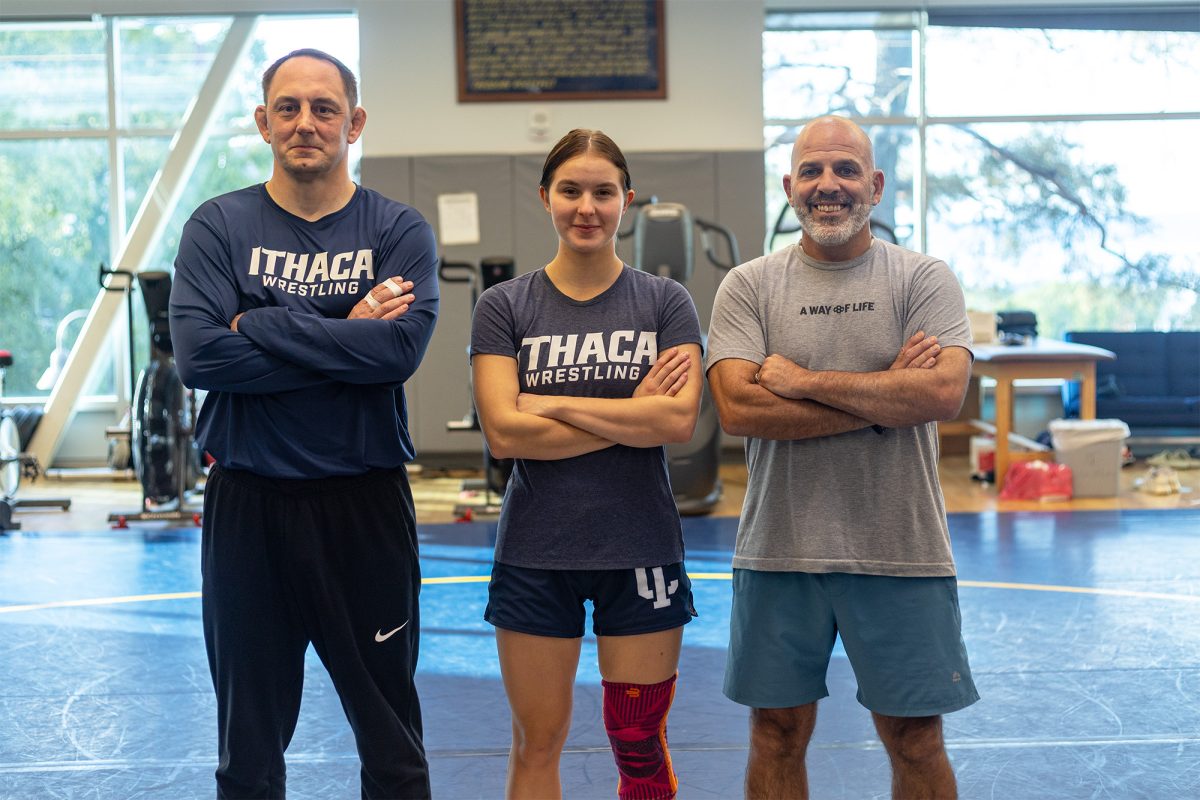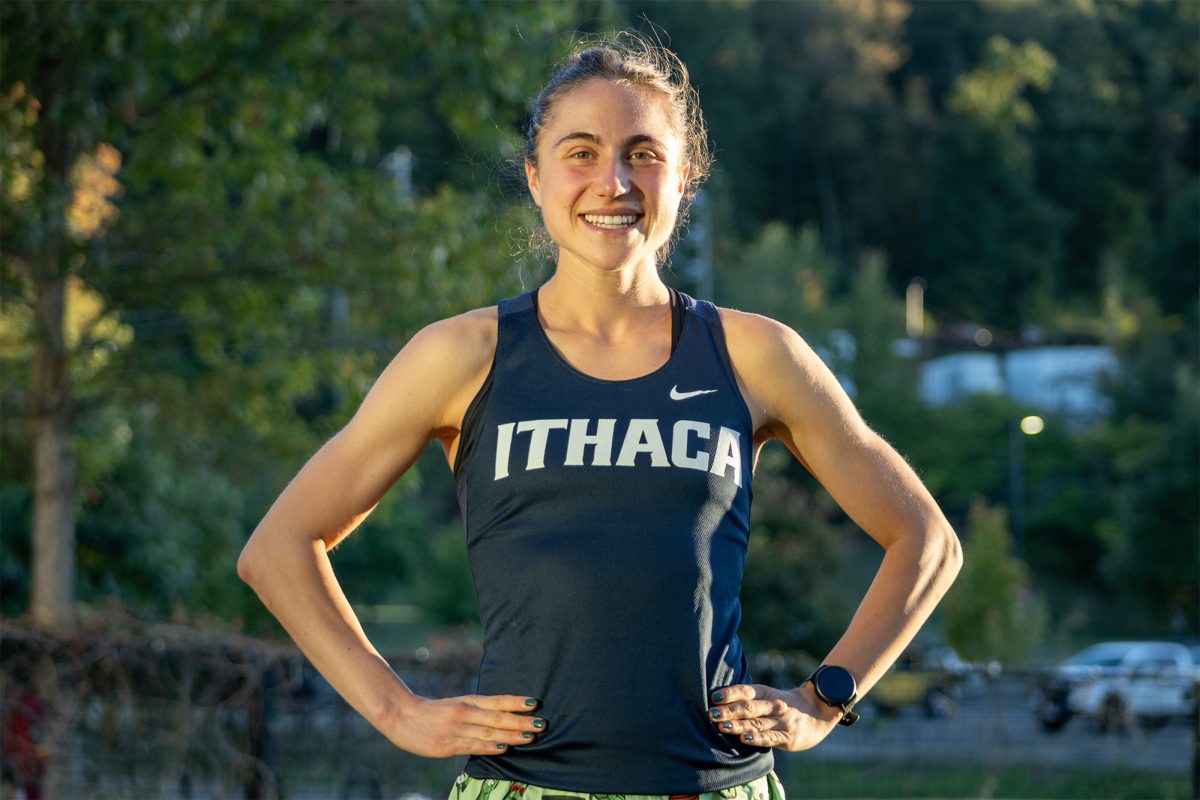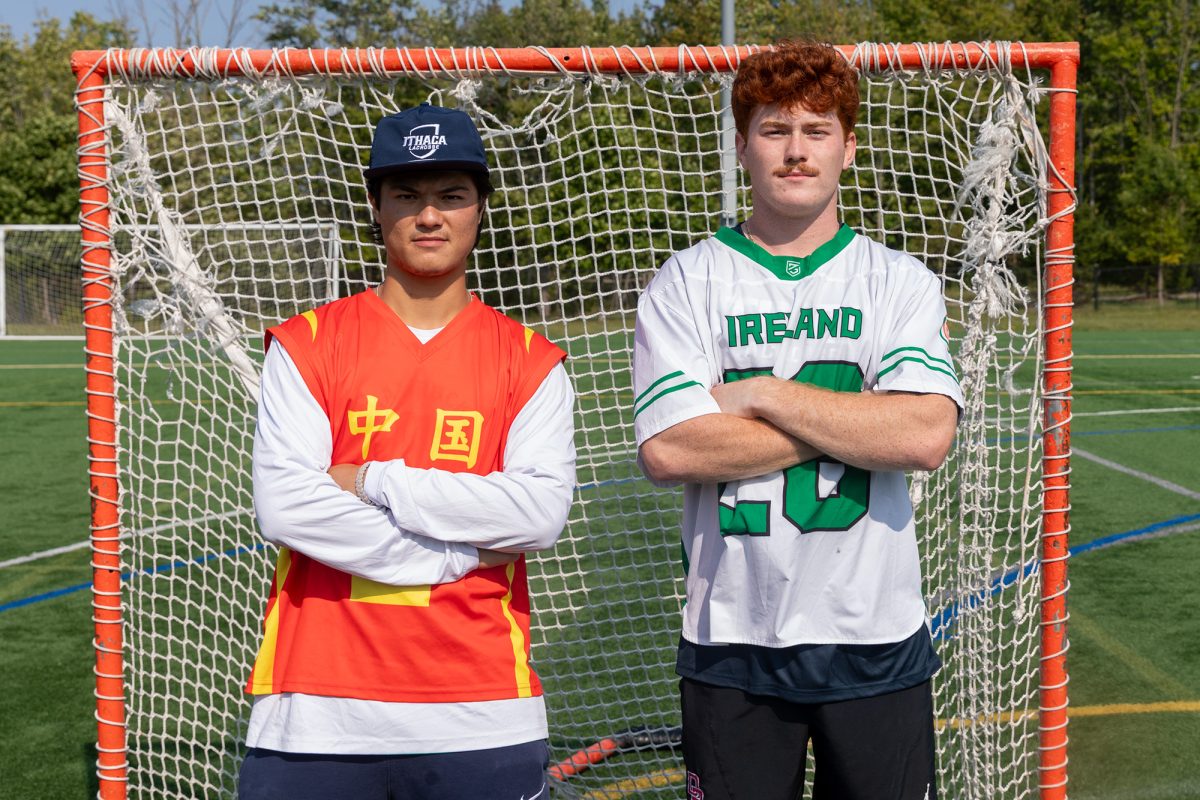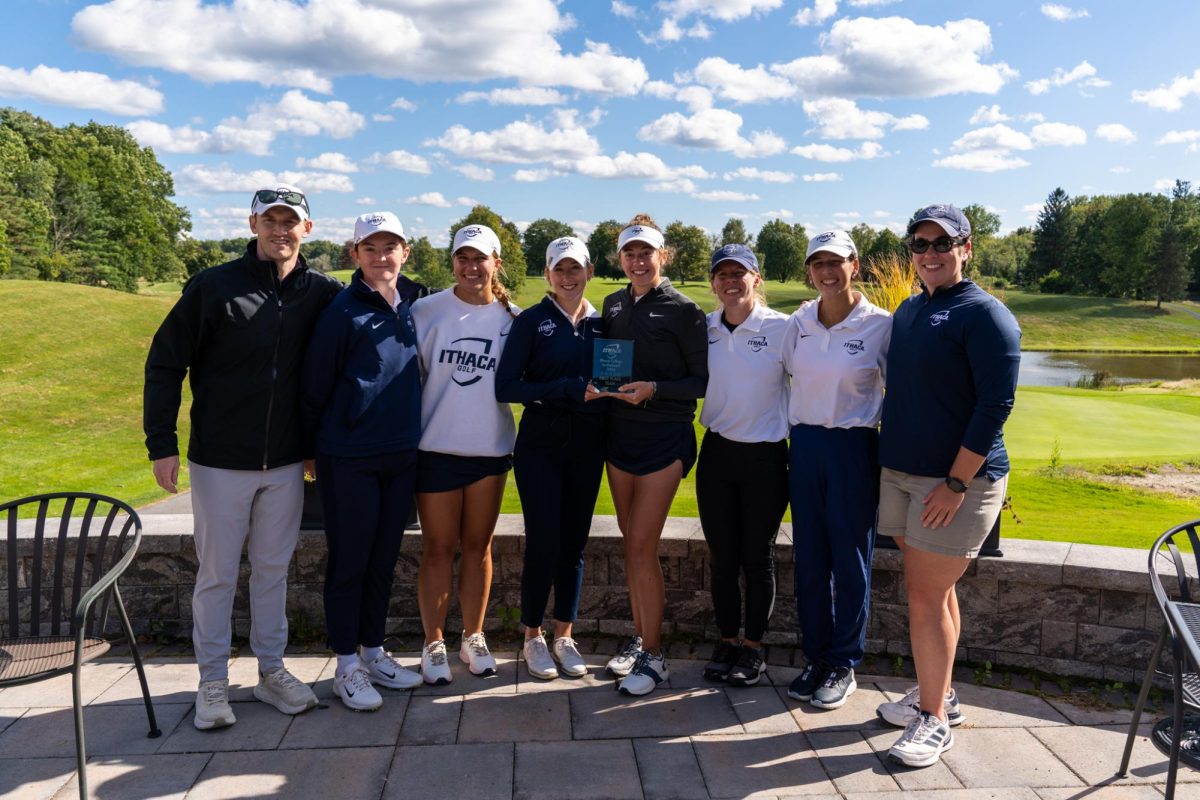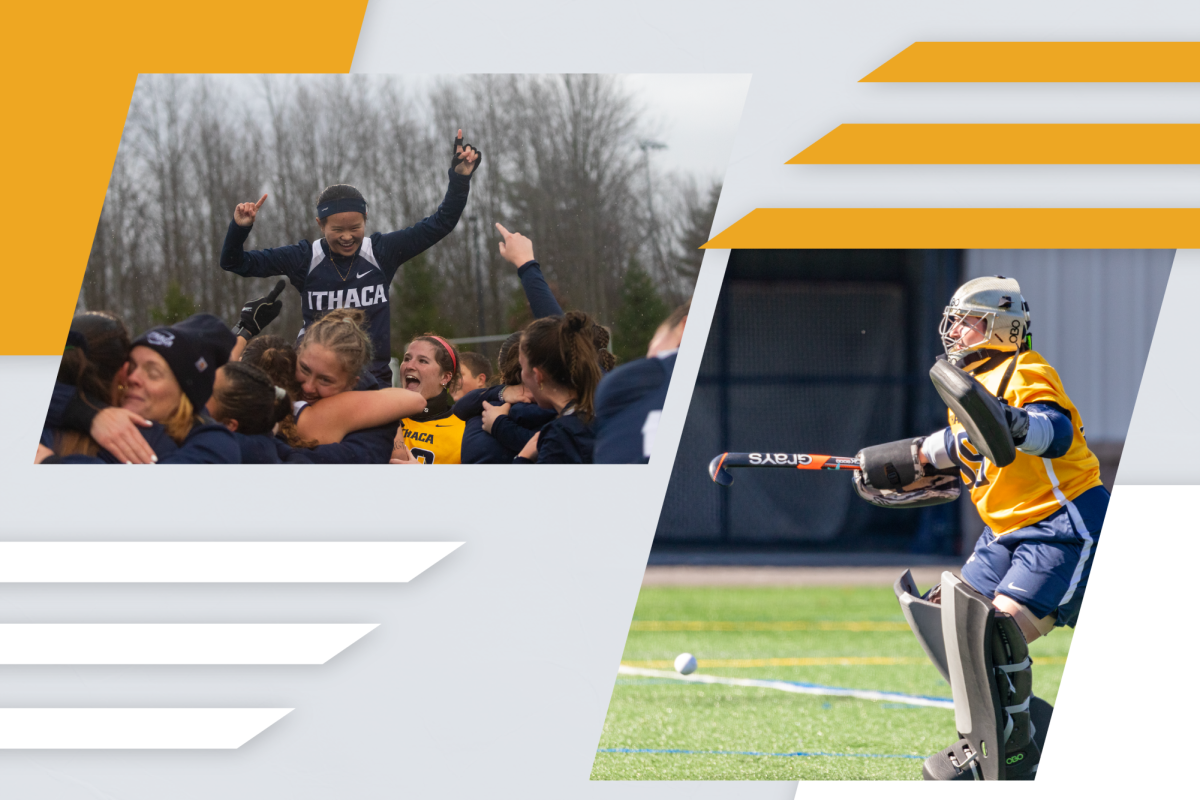When sixth-year physical therapy students Andrew Ward and Robert Allen were treating athletes at the physical therapy clinic in the Hill Center at Ithaca College, they both noticed substantial differences in body awareness between varsity and club athletes.
Ward and Allen thought the divide in knowledge was unfair, so, last year, they founded a new program at the college, called Bombers Helping Bombers, that supplies club athletes with exercises to strengthen and protect the muscles used most often in their respective sports. Ward said the purpose is to try to prevent injuries from happening in club sporting events.
“Varsity athletes have coaches and strength training, while club athletes are just going back to play each day without any guidance,” Ward said. “I thought this was unfair; they are both getting hurt and playing really hard.”
The college offers 14 varsity-level sports for women and varsity-level 11 sports for men. The college also offers 27 competitive sports clubs and 14 performance and recreational clubs. While there are 16 more club programs than varsity programs, the disparity in available resources for club athletes and varsity athletes is immense. For example, every varsity program has a head trainer who works directly with the team, while club teams are student-run and any trainer advice and usage is on individual not team-sponsored.
The organization started last year on a voluntary basis as both Ward and Allen gathered some of their colleagues and organized workshops for club teams like men’s soccer and men’s basketball. Last summer, they presented the idea to Sean Reilley, program coordinator of the Office of Recreational Sports, and Reilley helped the club get off the ground and hire a staff of 12 physical therapy students. The students are paid hourly for their service at the workshops, which typically run one to three hours at a time, and the program is funded by the Department of Recreation and Leisure Studies. Ward said the organization were granted funding as a result of serving the club sports division of the recreation department.
Allen said the program helps physical therapy students because it gives them real–world experience with young athletes who could use guidance in their preparations for competing. He said the workshop setting allows the trainers to reach a large group of people in a limited amount of time and still give a personal touch.
“We have always wanted to do sports-specific type of things,” Allen said. “Having a workshop is the ideal way because, in health care, people are realizing that it’s better to be preventative as opposed to reactive.”
Sophomore Paul Brecht, player on the men’s club basketball team and a representative the team’s coaching committee, said the trainers helped the team create a warmup routine that better prepare the players’ bodies for the upcoming games through various calisthenics, which are exercises that focus on various motor skills.
“With club, it’s a little less formal,” Brecht said. “We practice twice a week, and we didn’t really have a great warmup routine, so our president last year asked them to come in and design a warmup for us, some stretching for us and, overall, stuff that translates in games and also to keep us healthy in practices before games.”
The warmup consists of nine dynamic exercises, such as Frankensteins, which involve touching one’s arms to their opposite feet and alternating after each rep, and high knees, which help engage the body to perform at a high level. The trainers also identify what muscles are commonly used to perform the actions necessary for the sport so they can train the athletes to correctly care for them and avoid overuse injuries. Brecht said that this is a difference from last year and that he helped the athletes train the correct muscles for peak performance.
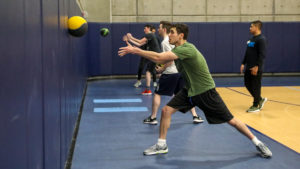
“They had four stations that were focused on basketball type drills,” Brecht said. “We would practice with a basketball or work on defensive sliding, and we would be strengthening parts of our body that we would be using that, oftentimes, a lot of people injure. We worked on our ankles and how to land properly. We worked on the groin area because a lot of people get groin strains and all these different things that hurt basketball players.”
So far in Fall 2018, the program has worked with the equestrian club, men’s club basketball, club ice hockey, IC Unbound and men’s club volleyball. The organization’s largest workshop has been with IC Unbound, which brought 30 participants to the event. Senior Samantha Seidita, president of IC Unbound and a physical therapy student, said the trainers kept everyone engaged and interested in the subject matter.
“We split into five different groups, and every group would have fifteen minutes at each station,” Seidita said. “We would work on different things such as landing mechanics, stretching and other dance–related things.”
While many of the trainers did not have much experience in training dancers, they were open to all the feedback they could get in terms of finding out how to work on the muscles that are important for dance, said junior Jordan McMahon, chair of performance for IC Unbound.
“I thought they were very professional,” McMahon said. “They communicated super well with us in terms of catering the job to dancers’ needs, which is something that I don’t really think they had done before. I think it was a good challenge for them to work with a different type of athlete.”
Seidita said IC Unbound have experienced a few injuries this semester and have had semesters where there are a lot more. McMahon said that following the steps they learned from the trainers has definitely helped the group stay healthy.
“Inevitably, you are going to have injuries,” McMahon said. “But doing these exercises that take five to 10 minutes before you send your leg to your head will prevent injuries.”
Senior Richard Evans, president of the men’s club volleyball team, attended his team’s workshop Nov. 27. He said the workshop focused on muscles that are important in volleyball, including exercises rotator cuff exercises, leg exercises, abdominal exercises and plyometrics. In addition to the workshop itself, the team was also given sheets of example workouts that would continue to train the muscles used in volleyball.

“Typically, in practice, we will just take the ball, throw it back and forth a couple of times to each other and then we would go into a game of pepper for our warmups,” Evans said. “It was less of a dynamic warmup, but they gave us sheets with exercises on them that we have implemented into our warmup routine.”
Men’s volleyball is not a varsity sport at the college, but the majority of the club team’s athletes played the sport at the varsity level in high school. Evans said the group’s ability to relate the exercises to the athletes’ varsity volleyball experience helped the group stay engaged. Club sports at the college do not typically get the same resources that their varsity peers do, so, Evans said, this program really helps club athletes get the information they otherwise would not learn about their bodies.
“Varsity athletes have professional coaches who really know how to train their athletes’ bodies,” Evans said. “With us, we are all alone. There is no coaches, no structured programs, so learning some of this will help us bridge that gap with the resources we don’t normally have. Even though we are a club, we definitely need to still stay in shape and take care of our bodies to be able to play the sport.”
Ward said the workshops benefit the trainers because they are able to understand what they are learning in the classroom on a whole different level.
“It’s so applied,” Ward said. “In a classroom, you learn concepts and techniques, but it’s not often that someone comes to you and says, ‘I need this. Here is the sport I play; help me break this down.’ In a classroom, it is hard to come full circle with concepts, but every single workshop allows us to come full circle and really help educate people on their bodies.”
Allen said the workshops have helped the trainers learn concepts they have not even learned in class yet, and the hands-on experience makes the whole process even more beneficial.
“In class, we talked about analyzing different moves in hockey and basketball, and we had already covered that in our sessions,” Allen said. “It’s good to get reps as a PT and speak in a front of a whole group. A lot of what we have to do is put our science-y speak into layman’s terms, and these workshops give us the reps in that aspect as well.”
Allen said he would like to see the program improve the relationship between physical therapy students and club athletes.
“I hope that this program leaves a positive impact on the college because student–athletes would be more educated about their own bodies and more able to take care of their bodies,” Allen said. “I also hope it would make them more likely to reach out if they are hurt.”
Ward said the program’s intentions are straightforward: The trainers just want to help their fellow students improve their physical health.
“Our name is Bombers Helping Bombers, and that is important in defining who we are,” Ward said. “We are just students, and we are using what we know and love to help other students do what they love to do.”


